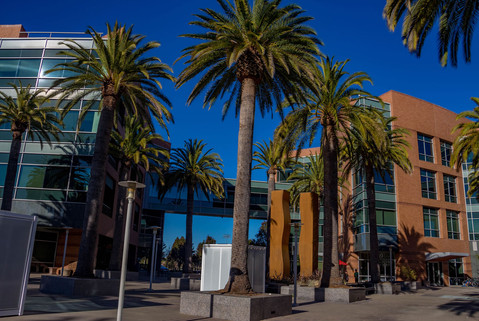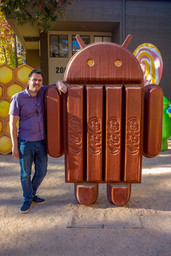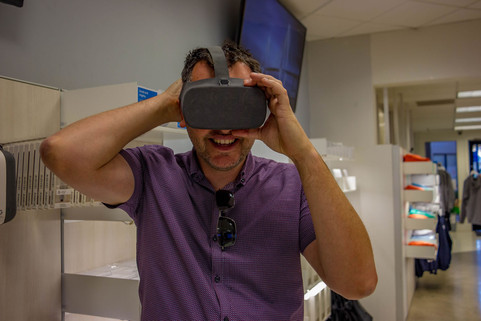A virtual gold rush in Silicon Valley
- Mike Turner
- Nov 10, 2018
- 5 min read
Updated: Nov 21, 2018
After an amazing 3 ½ weeks traveling from West Coast to East Coast to Southern USA, it’s back to the West Coast to finish my time here in the US visiting one of the most relevant technology places in the world – San Francisco.
Back in the late 1840s, California went through a huge gold rush. San Francisco boomed from the huge migration of people trying to make it rich off the huge discoveries of gold found near the region. Thousands of “49ers”, people named after the year that they began arriving in California, had a dream to make it rich and it’s still no different today. With Silicon Valley located on the southern end of the San Francisco Bay area and huge tech firms like Google, Adobe and Facebook calling this area home, San Fran is a tech startup mecca. Savvy “geeks” hoping that their next great idea will be the nugget that brings them their fortune as they get bought out by one of the big players living on their doorstep.
During my time here on the West Coast I managed to catch up with some employees from Google, Rebecca Ackermann – a UX designer and Mike Rotondo a senior software Engineer. Both Rebecca and Mike are part of the team that focuses on Google Expeditions – Google’s free app that allows for VR and AR content in the classroom. Google Expeditions is often how many teachers explore and introduce VR into their classrooms because it’s free, students can use their phones to view the content and also it can be viewed in immersive VR using a very cheap Google Cardboard headset.
As I was talking to both Rebecca and Mike about where Google is at currently in regards to VR in education and where they are hoping to go in the future, there was a common theme running through the whole discussion – accessibility. Google wants their tools to be available for as many students as possible. This is why they keep their technology free for education and spend a great deal of time ensuring that their products work with old phones as well as new devices – which is one of their biggest challenges. How do you take advantage of the features and possibilities of new technology owned by the few while ensuring that it is available and useful for the masses, whether you’re an Android user or live in the world of IOS?
Google has created the Daydream view, a higher quality headset made for “Daydream ready” phone (of which there are only a few) and are creating a standalone powerful VR headset but expeditions and cardboard will still be a mainstay of their VR options since it is so easily and readily accessible for education. And with the ability now for teachers and students to create their own expeditions using their own 360 footage or photos, or any of the images available on Google Earth, the technology can be catered for a specific curriculum. If you are reading this blog and would like to try VR in your classroom, then Google Expeditions is fun, cheap and very immersive, and would be the perfect jumping off spot on your VR journey.
I thought it would be good to see a school in the San Francisco area to try a gauge what it would be like to be an educator with tech giants on your doorstep. While planning for this trip I connected with a teacher at a school in San Ramon, a city to the East of the bay area. Davoudzadeh is a high school computer science teacher and also the founder of XR EDU – a group that aims to research experiential learning in education and to build curriculum and content that can be used with current VR technology. The groups also supports other teachers in the Bay area with meetups and other events around XR in education.
I happened to visit on a day where there was a guest presenter, Tom Impallomeni, who is a co-founder and CEO of Tribe VR – a platform for real-world VR training. They were talking to the students about the power of VR as a learning tool, particularly in relation to practical skills. Tribe currently have a DJ app that allows for anyone to learn the skills of being a DJ. They have a pro deck, modelled off of a very expensive, top of the line DJ deck, all in VR space and using a headset and controllers you can learn how to mix songs like a pro. They have even built into the platform a VR teacher, which is a real person who meets you in the VR space to help you learn the tools and techniques. I was able to have a go and, I must say, it was very easy to pick up and having someone next to me in VR (even though the person was back in their SF office) was very helpful. The idea is that real, professional DJ artists would be available, at a cost, for one-on-one virtual lessons. It’s an interesting idea.
Have a look at this Youtube video if you would like to see it in action. The video is of a professional DJ, David Starfire who performed a set from his home on the East Coast of the US and it was broadcast, via twitch – a live streaming video platform, to a nightclub in San Francisco.
After school, Azine and I sat down and talked through her VR experience and where it all started. Similarly to other teachers I’ve connected with, Azine’s interest in VR came from an immersive VR experience she had a few years ago. It was a surfing experience and as she was in the headset trying to surf and looking at the Hawaiian scene around her she immediately thought of her students and that this technology is going to change the face of learning due to the immersion factor which is not easily to replicate in many situations. Her interest grew and she began attending meetups and connecting with people in the industry. Azine sees VR as an opportunity for the masses, especially for impoverished nations or students in remote areas. As her knowledge grew she began trying to implement VR in her classroom through Google Cardboard, expeditions and a 360 camera.
Azine also began to create her own “experiments” in the classroom to test whether VR has any educational benefit. At the time, she was teaching English and set up an experiment to see whether having a VR experience could improve a student’s descriptive writing skills. The biggest takeaways for Azine, from these “experiments”, was a statistically significant spike in technology interest, specifically amongst the girls in her class, plus the number and variety of adjectives used in a student’s descriptive writing piece increased after having a VR experience. Both of these benefits helped cement Azine’s desire to learn more about the technology and to also help other teachers use it too.
Heading back to the West Coast has been a valuable way to end the USA portion of my scholarship tour. Being in one of the largest tech hubs in the world and speaking to builders and users of VR in the educational space has been invaluable to my learning on the topic of VR and its use in education. I guess, you could say, I struck gold.
Virtually, of course.



































Comments